A day at the World Supercross British Grand Prix
The World Supercross Championship is still quite new, and its British GP, round one of 2023, took place in Birmingham, a new venue for the championship.

The World Supercross Championship is still quite new, as is the entire concept of taking the US-centric sport of supercross to a global level, and, especially for someone who had never been to a supercross race before, the experience promised something new, something quite unknown.
And that is me, someone who has never been to a supercross before. Or, at least I had not been to a supercross before I spent the day, last Saturday (1 July 2023), at Villa Park in Birmingham for the 2023 WSX British Grand Prix.
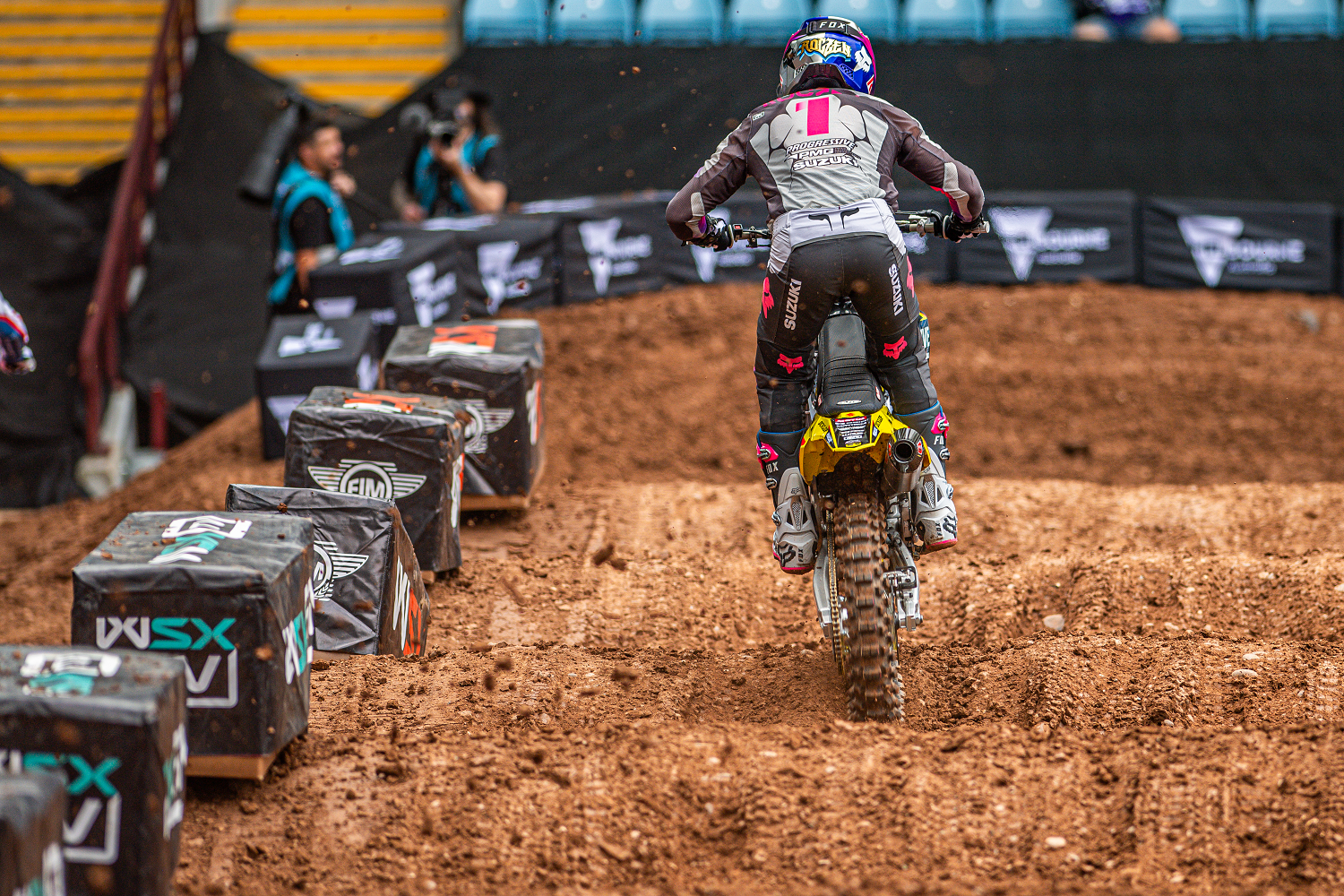
Well, I say “the day,” but I only arrived in time for the end of opening ceremonies because [hold your breath] I spent the first part of my day in Donington Park covering Superpole and Race 1 at WorldSBK's UK round before driving to Birmingham for WSX, and, when I arrived at Villa Park, I managed to find almost every way imaginable to go around - and not to - the car park.
When you watch AMA Supercross, it becomes so common to watch a night race that those taking place under sunlight feel legitimately odd. That’s not to say that the British GP felt odd, but it also did not feel exactly how I imagined supercross would feel, and I think at least some part of that was because of the time of day in which the race took place. The first SX2 heat started just after 18:00 (partly because of scheduling but also because the gate didn’t drop) and the WSX finals finished at around 21:30, so the sun had not set before all the fans were piling out of the stadium and back to their cars. I suppose that is the reality of racing at the height of summer. WSX say they want to start no earlier than August in 2024.
The feel of the event was also different because of the fans. Air horns do not seem to be especially prevalent at AMA Supercross races and their presence (probably combined with the aforementioned daylight) in Birmingham on Saturday made the race feel almost like an MXGP - or, as close as a supercross can feel to a motocross Grand Prix. Perhaps, they made it feel European.
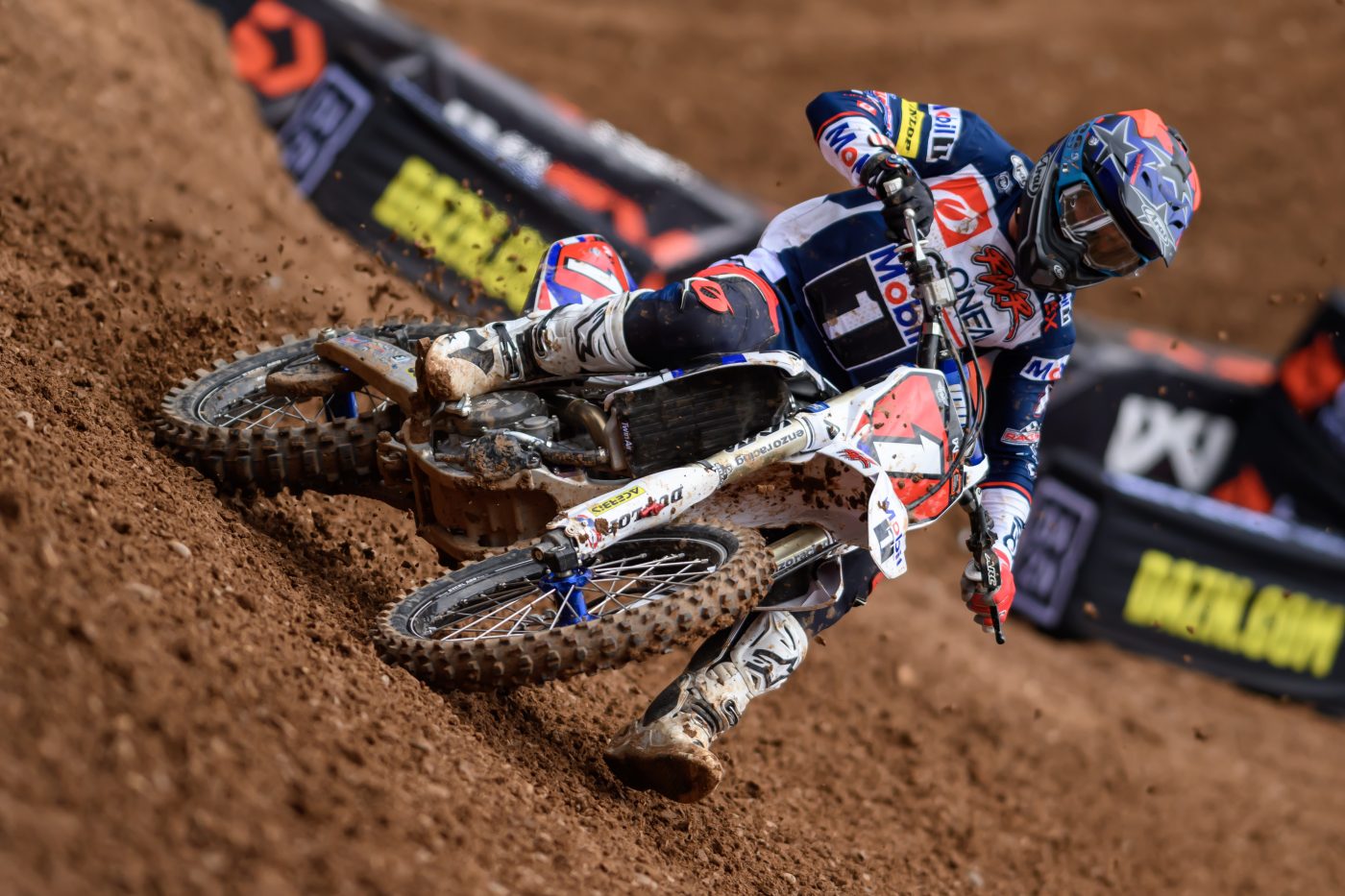
The heat races in the US are important because if you do not finish in the top nine positions you have to go to the LCQ, where anything is possible. The jeopardy exists. In the World Supercross Championship, the heats’ jeopardy comes from a different place. There is no risk of not making the finals, but the short races that make up the finals make the starts, and therefore the gate pick that is decided by the heats, enormously important.
Before the SX2 finals arrived, it felt like there was a lot of down time. After the heat races, there was a fairly lengthy gap filled by not very much before WSX Superpole. But, after that, the action came quite quickly; the SX2 finals following closely after the aforementioned Superpole, and the WSX finals not too far behind them.
It is certainly quite strange to see riders finish a race and head immediately back to the starting gate, and when you look at it happen you can almost feel the intensity of it, but it means that there is never much time for the races to settle. On one hand, it makes the night quite difficult to follow, but, on the other hand, the racing was perhaps more exciting for it, because you never really knew what was happening on the scale of the Grand Prix, only the individual final.
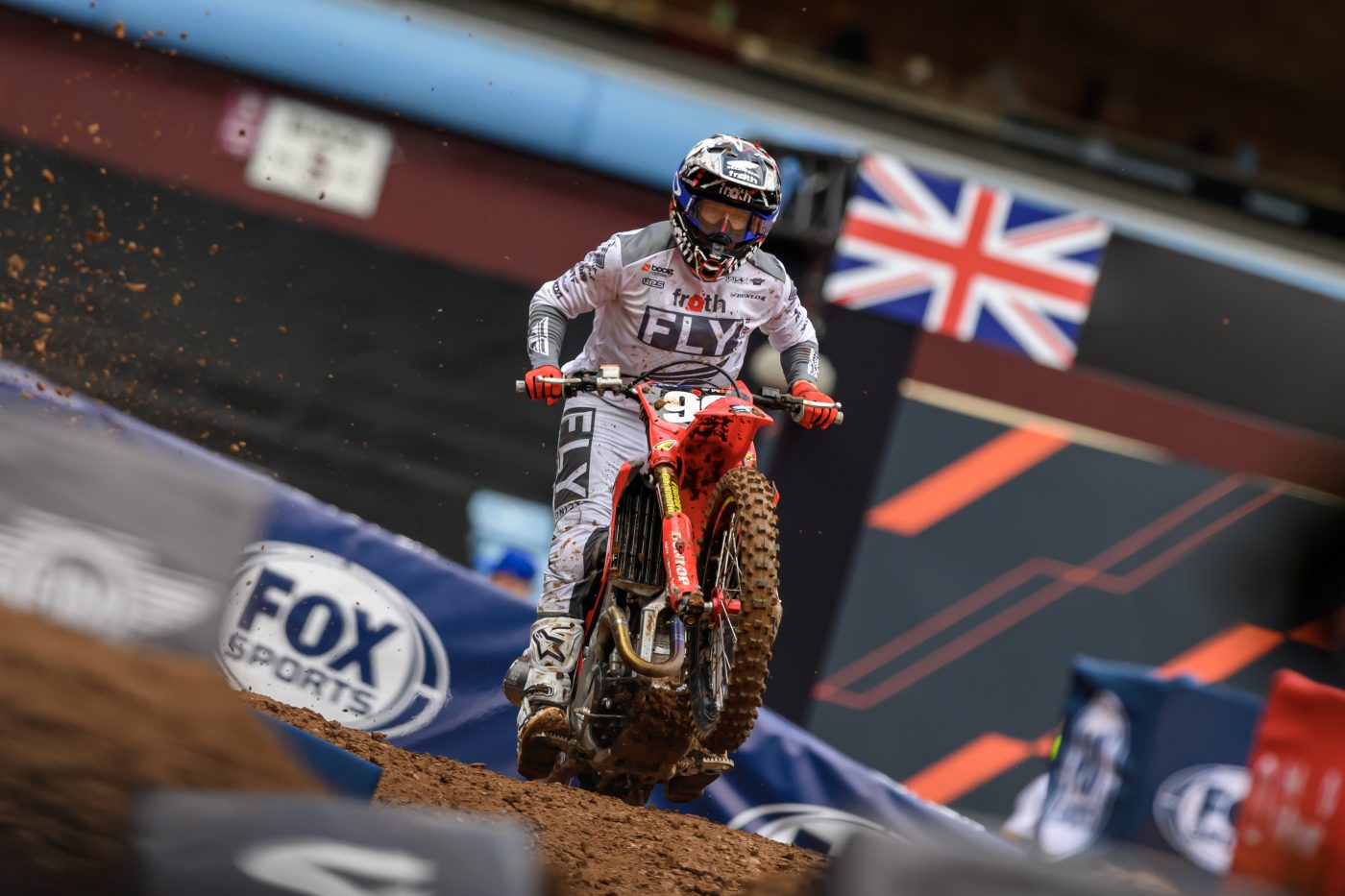
That came into particular focus at the start of the final SX2 race. I was just watching the leaders. Shane McElrath won the first final, and finished second in the second final. Max Anstie scored opposite scores to McElrath, and so the battle for the overall GP win in the SX2 class, and as they rounded the off-camber turn in the middle of the track, there was a gasp from the crowd. Mike Alessi had crashed at the end of the preceding rhythm lane, and was not moving. Five further laps passed until the race was red flagged, the race passing until then with the section controlled by red cross flags, which meant the riders were forced to roll - not jump - that part of the track.
A significant amount of time passed before Alessi was able to be moved to the ambulance cart. As he was driven past the Trinity road Stand, Alessi put up a reassuring thumb - until then, whether he was conscious or not was a relative mystery.
By the time Alessi had been taken out of the stadium - as racers tend to be in these situations -the likes of McElrath and Anstie were ready to resume battle. Unfortunately for Anstie, his hopes of a home GP win went away when he was passed for second place by Brazil’s Enzo Lopes, whose day began with a shoulder dislocation, and who went on to challenge McElrath for the win before crashing in the penultimate turn. McElrath, the reigning SX2 champion, got his title defence off to the perfect start.
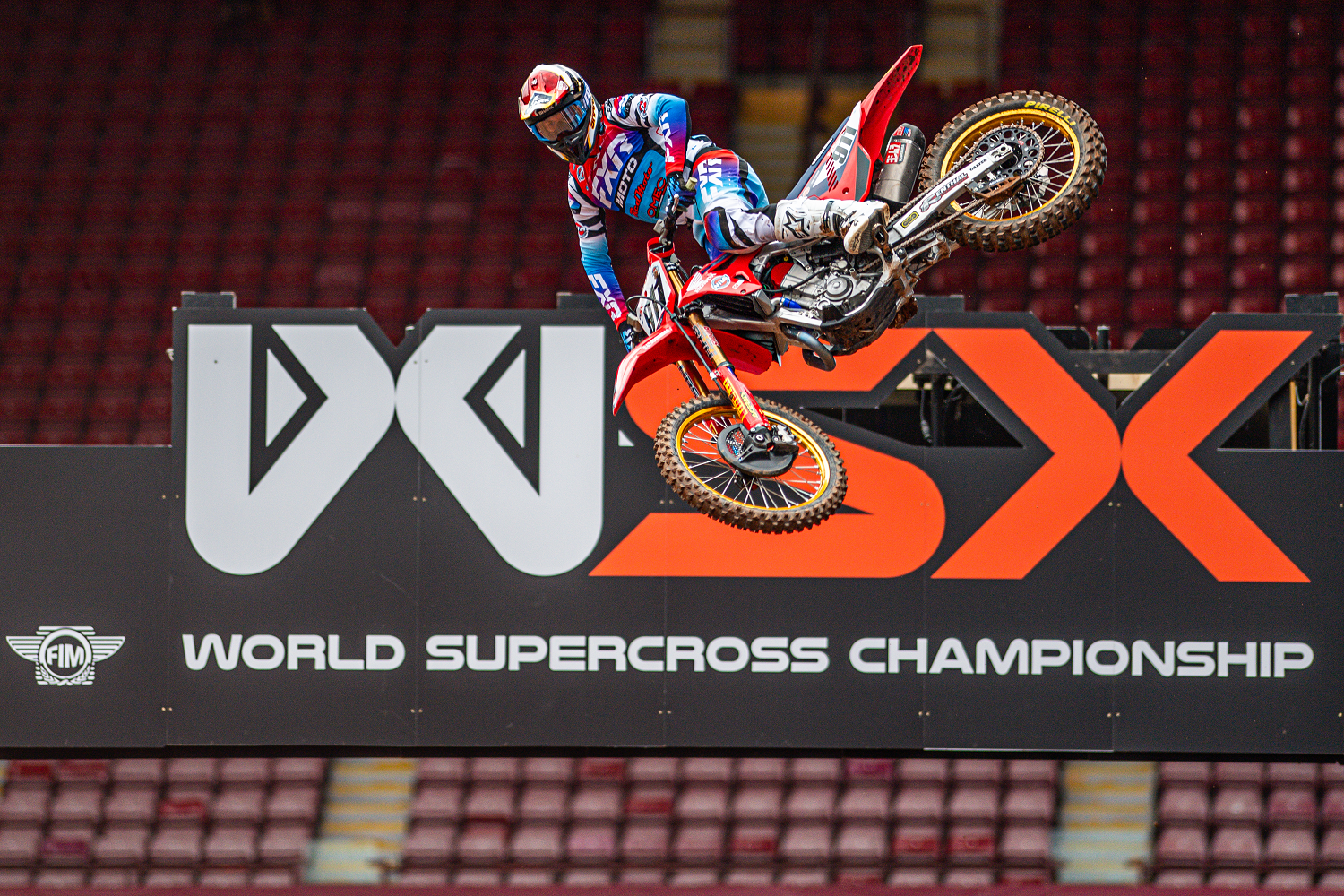
After the SX2 podium and another bit of downtime, the WSX finals were ready to start. It is a strange class, because anything other than a Ken Roczen victory is essentially a surprise, but the British GP showed that World Supercross’ format of three relatively short races (two, eight-lap races followed by one, 12-lap race for the WSX class) can create the conditions for a rider like Roczen to have to genuinely fight for his victory.
This was not displayed better than in WSX’s second final, which was the only one that Roczen did not win but also the one which best displayed the level of his ability.
The reigning WSX champion made a bad start - “I just haven’t done that many starts lately,” Roczen said, explaining his lack of performance out of the gate in Birmingham - while Vince Friese made his second holeshot of the night.
Roczen ended up coming through the pack from around fifth or sixth place, to get into second, when he had a few seconds to make up on Friese.
The general comments from the riders after the race were that the track was not very technical in terms of its layout, but that it became technical as the track surface deteriorated. “The track was getting really chewed up,” Ken Roczen said after the conclusion of the GP. “It was very simple when it comes to the obstacles,” he said, “but it was really getting beat.”

This also made it more difficult to pass, though, as the inside line became the obvious choice in many of the corners. Additionally, the corner at the end of the whoops was a 90-degree right-hander, which generally also limits overtaking.
These two aspects made Roczen’s ride in the second race his most impressive, even though it was the only final he did not win.
First, he came from the middle of the top 10 to second place within five laps, and then spent the remainder of the race closing down Friese with an incredible pace.
Earlier in the day, when I had been at WorldSBK, I was watching Toprak Razgatlioglu and Jonathan Rea glide their respective motorcycles into the final two hairpin corners there with the rear wheel barely touching the floor and hopping in almost every possible direction, the front tyre constantly pushing and sliding, and, in the case of Rea, both feet off the pegs.

Roczen, in the second race in particular, was similarly impressive. I was sat at the end of the final rhythm lane, before the 90-degree rights either side of the start straight that ended the lap in Birmingham, where, Roczen’s speed and aggression in the rhythm stood out, as he scrubbed - with significant exaggeration - the last double before the Supercross Triple that ended the section. Landing from that triple, Roczen then carried more speed through the following right hander, occasionally folding-and-saving the front tyre before he hit the wall jump, and always sliding the rear tyre to straighten his line up that wall. Finally, Roczen was the only rider (at least that I noticed) to be landing into the small berm on the raised 90-degree turn that finished the lap. He did it in Superpole - before the SX2 finals - and then again multiple times in the WSX finals, even when the line broke down and he had to use a rut to the inside of the berm that prevented him from wheel-tapping the final single before the finish jump.
On the last lap of the second WSX final, Roczen caught Friese, but he had, of course, only one lap in which to make his move. His only real opportunity came at the end of the whoops, and he went to Friese’s inside, but the #3 rider closed down the door, successfully blocking Roczen’s attack.
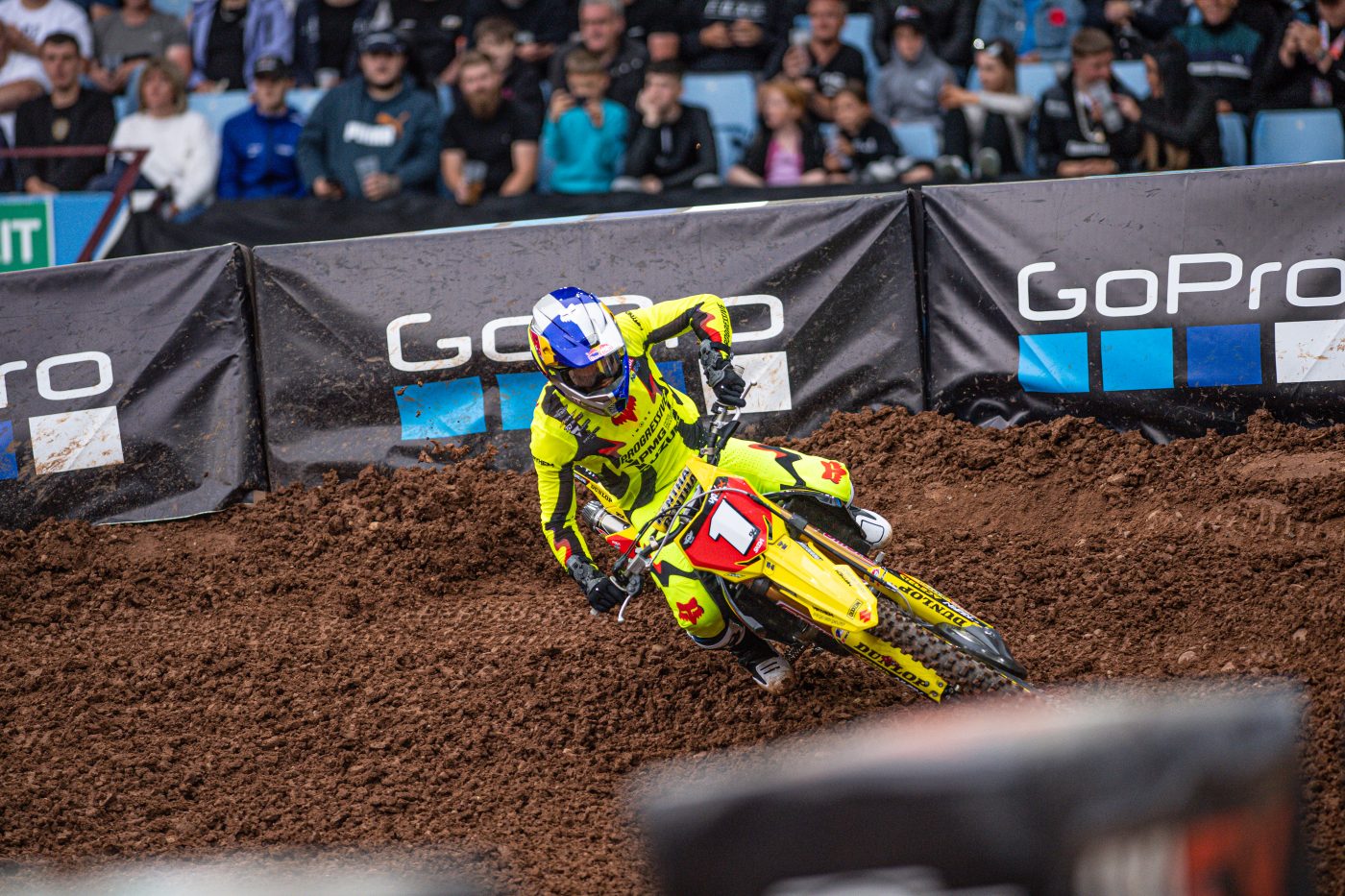
The German rider’s speed then took over, and he caught Friese again in the little distance that was left to the finish; and, although Friese hung on for the win, it was on this occasion that, to me, someone who has watched many a supercross on TV but never from the stands, it was possible to see how an elite rider like Roczen makes his difference compared to an exceptionally good rider, like Friese.
“I just did whatever I could to get as close as I could, but I essentially just ran out of time,” Roczen said. Certainly, in comparison to the AMA series where a sub-50-second lap time - as Birmingham proved to be - would result in at least 25 laps in the 20-minute Main Event, the eight-lap finals really put a lot of emphasis on the starts.
But, perhaps Roczen was, despite his impressive performance that ultimately overcame his poor starts and won him the GP, was below his standard. “I’ve been riding some motocross,” Roczen said. Birmingham was one week after the High Point National in the AMA Pro Motocross series, which Roczen raced and almost found himself beating the so-far-unbeaten 450MX rookie Jett Lawrence. “I rode one day of supercross, I didn’t focus hard enough on it,” Roczen admitted.
“I felt a little bit like a fish out of water,” he continued, “and I just had to come from way back, and it was a little bit sketchy, and eight laps is not a whole lot of time, so it was not like I could wait until later in the race.”
Certainly, Roczen, and the rest of the World Supercross Championship riders, will have to do some waiting now. The next round of World Supercross is not until late September in Singapore.
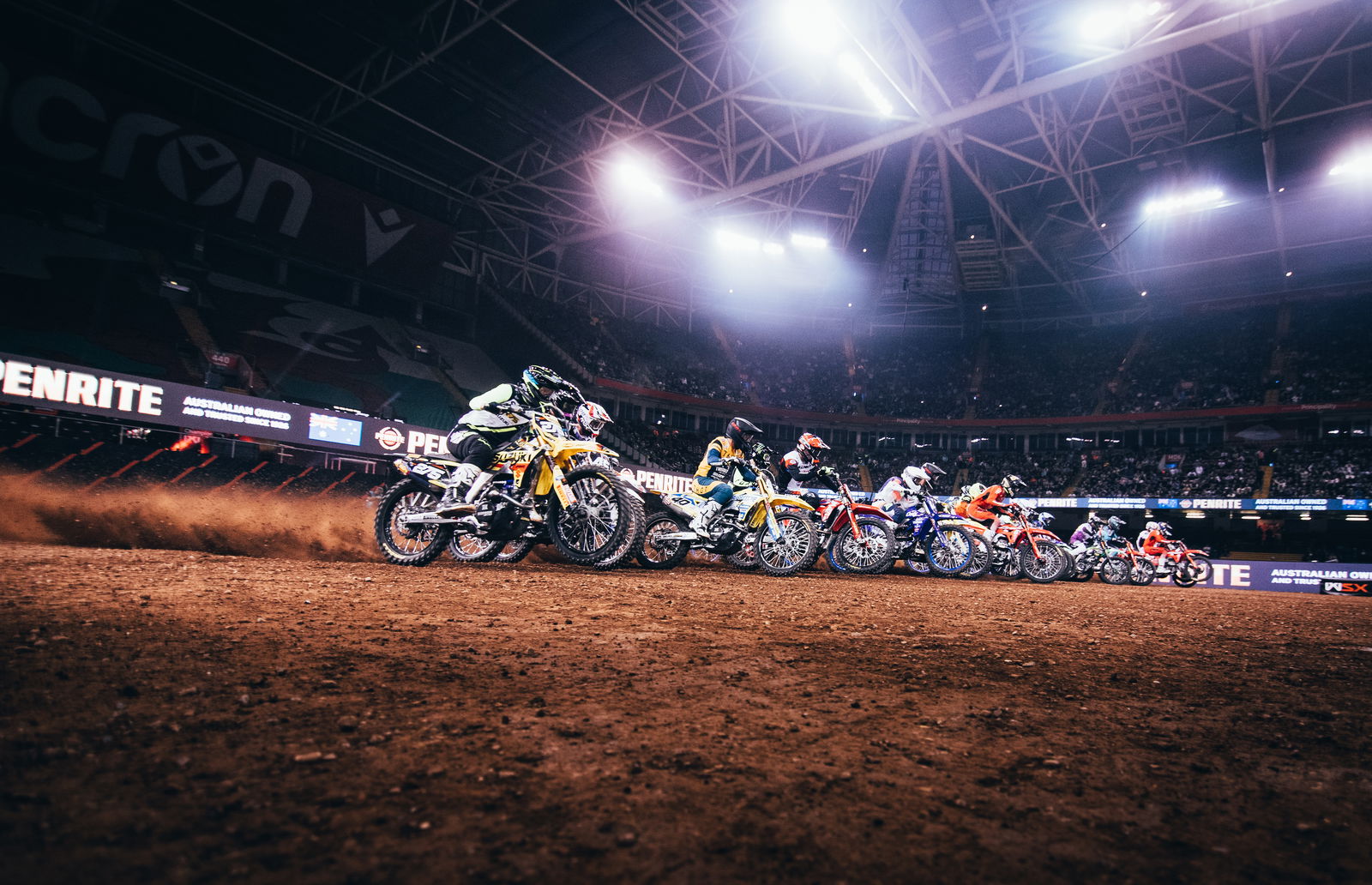
.jpg?width=1600)